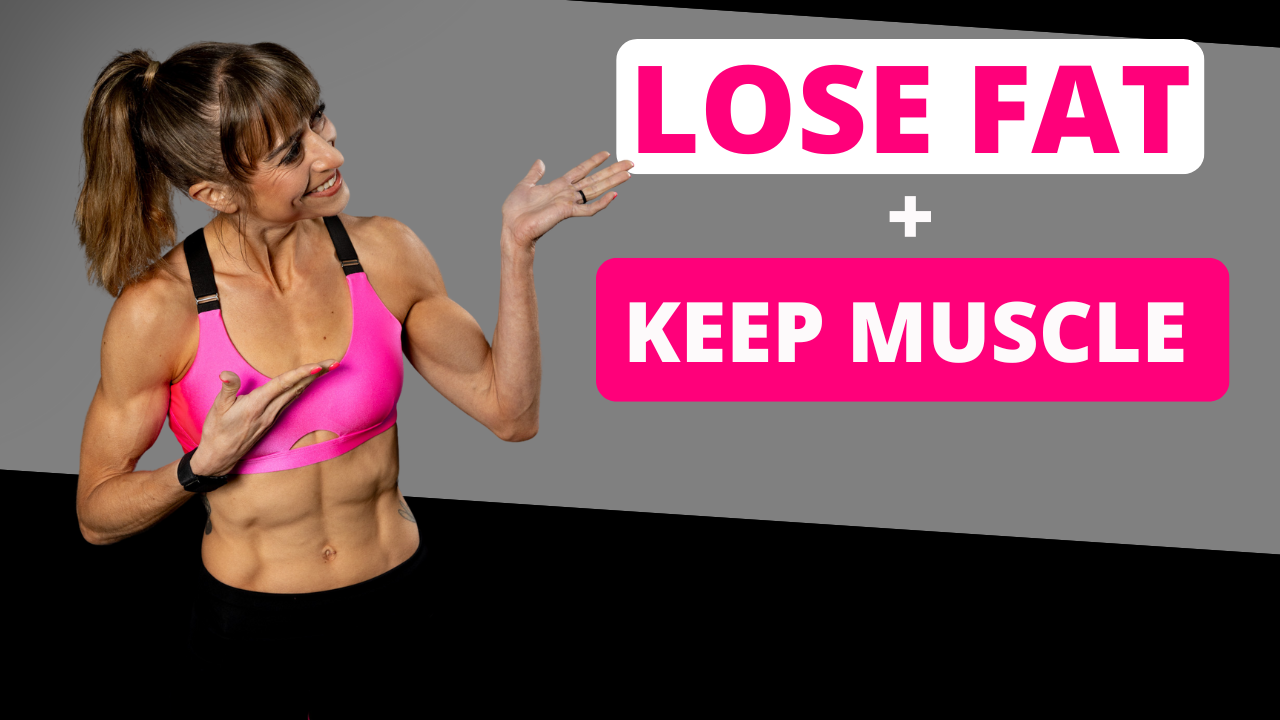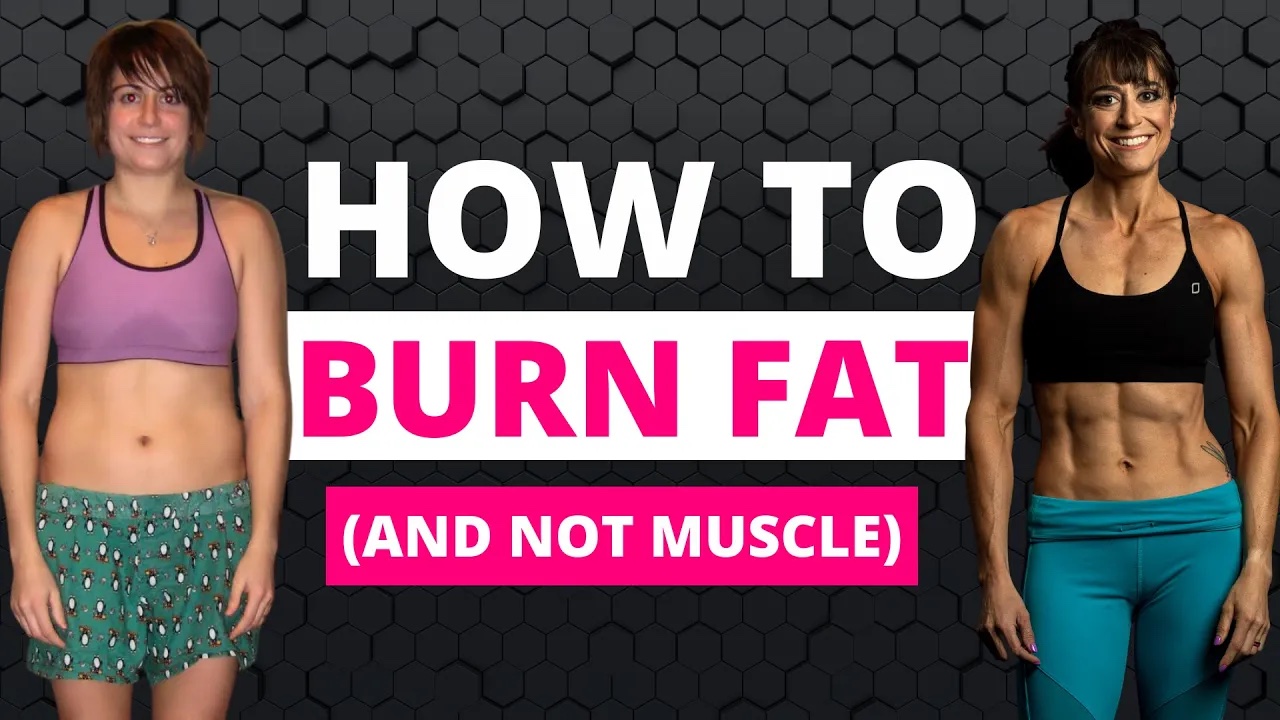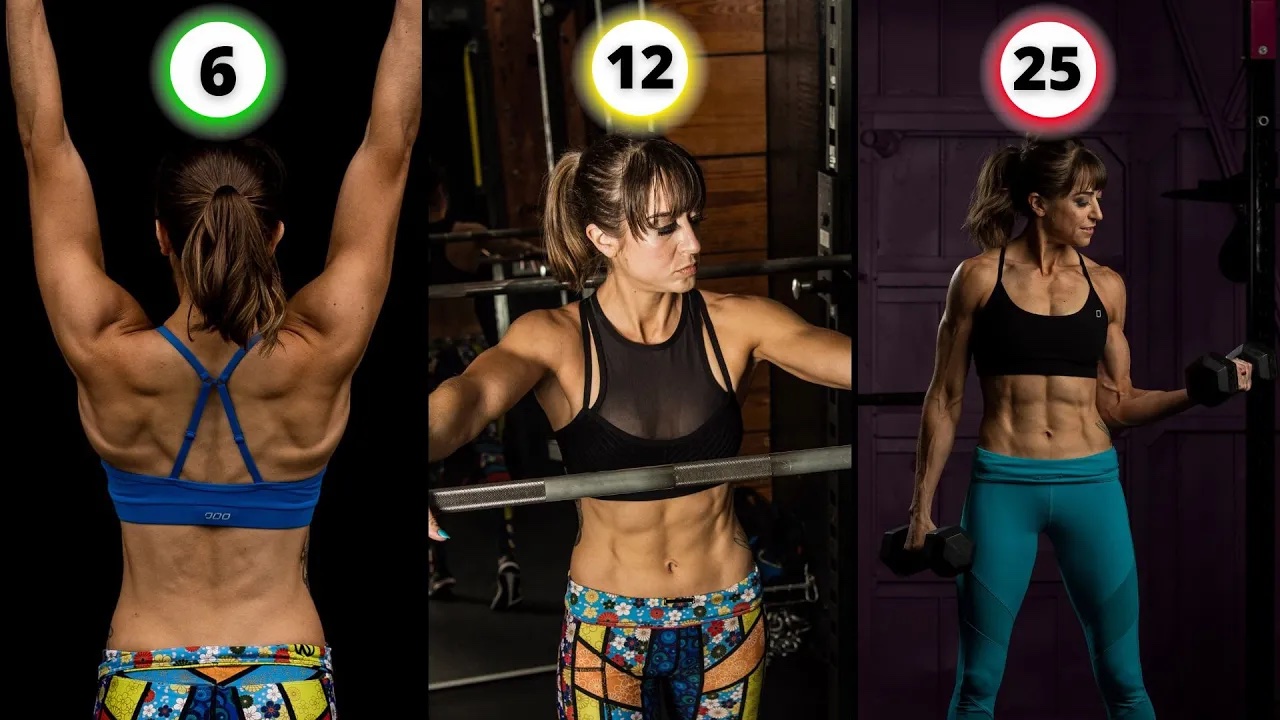
Lose Fat + Keep Muscle (5 Training Tips That WORK)
To look your leanest, you want to lose fat while not losing muscle.
Heck if you can even gain a bit of muscle in the fat loss process, even better.
And while this is hard to do, and diet is 100% key, too often the way we design our workouts actually sabotages our fat loss results.
We turn to cardio over strength, favoring the calorie burn.
And that deficit we create from doing more cardio while eating less can yield some fast immediate scale changes.
It is also what leads to us ultimately hitting a plateau, even feeling like we look softer and deciding all the hard work isn’t worth it as we become burned out and restricted and hungry.
Then the scale rebounds and we gain even more fat as the habits we were trying to implement just weren’t sustainable and our body adapts to the amount of cardio we were doing because we couldn’t keep trying to add on more to progress it.
That’s why I wanted to share 5 tips to help you accelerate your fat loss results while preserving your lean muscle mass to help yourself avoid metabolic adaptations and see lasting recomp.

And that starts with prioritizing strength work over cardio.
But then it isn’t enough to just focus on strength work, you want to be strategic and intentional which is why these 5 tips can help.
Because how you design your strength workouts when in a fat loss phase is different than during a muscle building phase.
While at both times you want your workouts focused on maintaining and building muscle, your fueling and therefore energy levels may be different making different training techniques even more beneficial.
It’s why my first tip is especially key to help you push that progression while in a calorie deficit…
#1: Use Rest-Pause Training Technique
To build muscle, you need to challenge yourself to progress and push in each workout. But sometimes we can’t just do a harder variation or more reps or more weight of an exercise.
Especially when we are in a calorie deficit, we can feel a bit depleted and like we aren’t as strong.
That’s where this rest-pause technique can help. It can help us use heavier weights or do a few more reps by implementing a short rest period or PAUSE in a single set.
Basically, where you feel like you’d have to stop, pause for 15-30 seconds and then complete more reps with the same weight and move.
You can then end up moving more weight in your workout while maintaining heavier loads and more advanced exercise variations for more volume.
An example of this could be a lunge. If you can only do 8 reps with the weights you’re using, and you’ve even been stuck at this amount for a bit, you may do your 8 reps. Pause for the 15-30 seconds.
Then do 2-4 more based on what you can do before fully resting.
This way you get out 12 reps with a weight and lunge variation you could only really do 8 reps with.
It helps you push that progression when stuck and even focus on maintaining quality reps instead of getting sloppy just to try to do more.
Then next don’t only focus on progressing moves through adding weight or reps. But also Vary Your Exercise Range Of Motion.
Increasing the range of motion you’re working through can help you improve your mobility and strength.
It can help you even load a muscle under more stretch to see better muscle gains faster.
But you don’t have to just increase the range of motion to load a muscle under stretch or drive growth.
Sometimes you also want to shrink the range of motion and do partial reps or pulses.
This can keep the muscle under tension for longer and even keep you just working the muscle while under stretch.
An example of this may be something like pulse RDLS.
With this move you’re keeping the hamstrings stretched and working in a smaller range of motion.
Combining this even later in a workout after a full range of motion RDL may be just what you need to really work your hamstrings to fatigue.
On the flip side of this, you may do a full range of motion or even extended range of motion abduction exercise to then include pulses at the end range of motion after.
Combining different ranges of motion can help you really fully work muscles while creating progression without just adding loads.
So don’t fear increasing the range of motion but also including partial reps at times strategically to isolate muscles further!
And not only do you want to play around with exercise range of motion, but you may want to adjust exercise order.
Often we think just compound moves to more isolated moves over the course of our workouts.
But sometimes by putting those isolation moves first, we can pre-fatigue an area to actually max out with lighter loads on those compound moves.
This can be key during a fat loss phase when we are a bit more energy depleted.
It’s why tip #3 is to include Pre-Fatigue Moves.
Try putting that leg extension exercise BEFORE your front lunges or squats.
You may be surprised by how much more you feel those quads working then in the compound move and by how heavy a lighter weight than usual feels.
This can really help you especially if you feel slightly stuck at a weight where you can’t do more BUT the weight isn’t fully maxing you out unless you keep adding more reps.
It can be key if you don’t feel those stubborn areas fully getting worked the way you need.
That little bit of fatigue helps you work a muscle closer to failure with the compound lift.
It can be that little gasoline on the fire to accelerate those muscle gains!
So for especially stubborn muscle groups you really want to target and grow, consider at times a little isolation work first in your workout to really feel those areas already working before you go into those compound lifts.
Just be conscious when you do the pre-fatigue work you don’t then compensate in the lift.
This may mean starting a bit lighter than you think with the compound exercise because the areas are already tired going in!
With all of these techniques, it is about maxing what you’re doing. We don’t just want to keep adding more.
While volume is key, too often we just add more to our training, which becomes slightly wasted work as we are too tired by the end of the session to be as intentional and maximize every rep.
So instead of just trying to add in more moves for an area to a single session or do more rounds, consider less work per session but more training frequency for especially stubborn muscle groups over the week.
This is why tip #4 is to Favor Weekly Frequency.
If you have a stubborn area you want to build muscle in, train it 2-3 times a week.
Don’t do 8 moves on one day, spread out your volume over the week.
This can be key during a fat loss phase as we are in an energy deficit so tend to fatigue more quickly.
That move you’re doing right now at the end of a long upper body day for your shoulders may FEEL like it is getting 100% effort, but your 100% at that time is far less than it would be if you did that move second on another day.
This volume spread out means we can do less on a day so we aren’t just going through the motions on the final rounds to get in more work on a single day.
Think about that 4th exercise you’re doing…you’re way more tired for it than the first exercise.
So instead of doing more on a single day, spread that work out.
Give yourself still days to recover between, but allow yourself to be fresher for those moves by not just stacking more into a single session.
If your shoulders are a stubborn muscle group, include 2-3 shoulder days a week.
Make one the more intensive one, with maybe two other days you even include just a single move for your shoulders over adding those two extra moves onto one day.
It will surprise you by how much more you are actually able to do with certain exercises when you aren’t tired trying to cram them in at the end of a session!
This will also allow you to include more diversity of movement for muscle groups over the week to really hit every aspect and see better muscle gains!
And by increasing training frequency over just doing more for a muscle group in a single session, you can often also be more strategic with tip #5…
Stop Skipping Rest.
Our body only rebuilds when it has time to repair and the fuel to do it.
When in a fat loss phase, your gas tank is already low. You need to allow for proper recovery to optimize how you do use the fuel coming in.
So do not skip days off.
But also don’t skip rest during your workouts.
The rest allows you to optimize each set and really maximize your output on reps.
Because the more fatigued you get over your workout, the more you feel like you’re working hard but not able to push progression in the same way.
And cutting out all rest, while it can make you feel like you worked harder in a session because your heart rate gets up, can also turn your strength workouts into more cardio sessions.
While this may feel good, it can also backfire and hinder the muscle gains you’re working hard for.
It can put you into that viscous cardio weight loss cycle.
So include rest and allow yourself to recover to lift heavier. Even just 1-2 minutes between moves or rounds depending on the workout design can be key.
And don’t forget about even the short rest of rest-pause technique to really push yourself.
But this is also why favoring weekly training frequency can be key.
Doing less for one area on a day and even hitting a few large muscle groups in a session can allow you to get in more rest while continuing to work and be efficient with your time. By cycling what is working, another muscle group can rest as you continue to use your gym time efficiently.
Rest doesn’t have to mean just scrolling on your phone. Heck, even get in some extra steps moving around the gym instead.
But don’t demonize rest if you want to push to build muscle.
Remember, muscle is key to metabolic health and ultimately looking leaner as we lose fat.
For amazing workouts you can do anywhere to build strength, muscle and improve your metabolic health to see fabulous recomp, check out Dynamic Strength!
–> LEARN MORE






